How to Effectively and Accurately Implement Data Tracking Design
The Importance of Data Tracking in Data Analytics
In the digital age, data is a valuable asset that drives decision-making, strategy development, and overall business success. Effective data tracking is crucial because it allows businesses to collect and analyze user interactions and behaviors, providing insights that can lead to increased revenue, customer loyalty, and operational efficiency. By implementing a robust data tracking plan, companies can standardize their data tracking methods, ensuring that all data points are accurate, reliable, and ready for analysis.
Benefits of Data Tracking
- Informed Decision-Making: Data tracking provides a solid foundation for making informed business decisions by offering detailed insights into customer behavior and preferences.
- Improved Customer Engagement: Analyzing data from various touch points helps businesses understand the customer journey, leading to better engagement and personalized marketing strategies.
- Operational Efficiency: Standardizing data collection processes reduces redundancy and ensures data consistency, streamlining operations and reducing costs.
By leveraging data tracking, companies can gain a competitive edge, optimize their marketing efforts, and enhance customer satisfaction
What is Data Tracking?
Data tracking refers to the process of recording user behavior and outcomes to facilitate fast, efficient, and comprehensive data applications. It involves capturing various dimensions of each event, such as Who, When, What, Where, and How. To understand this better, let's look at two examples.
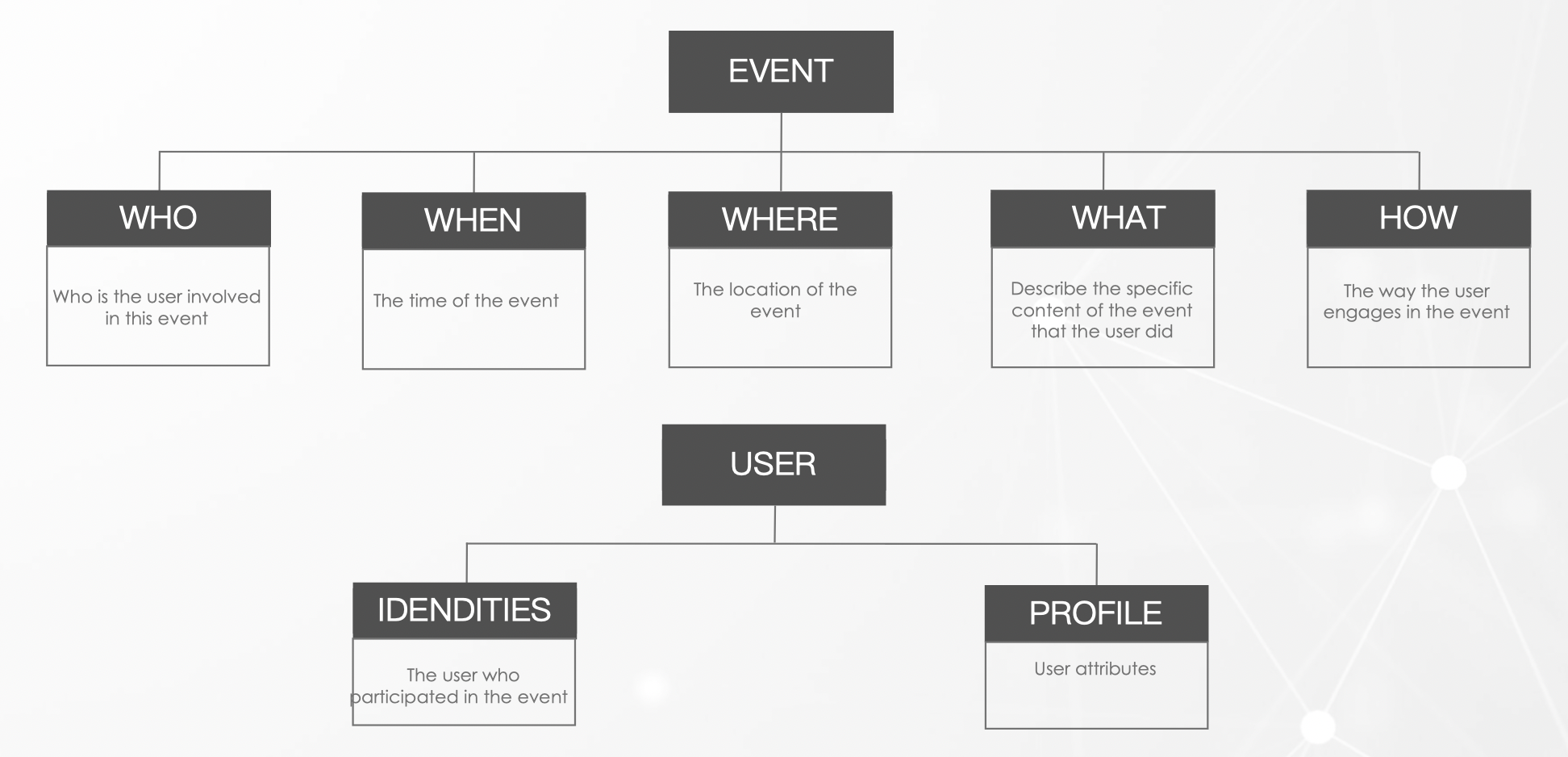
Example 1: Describe the Behavior of Viewing the Home Page of an App
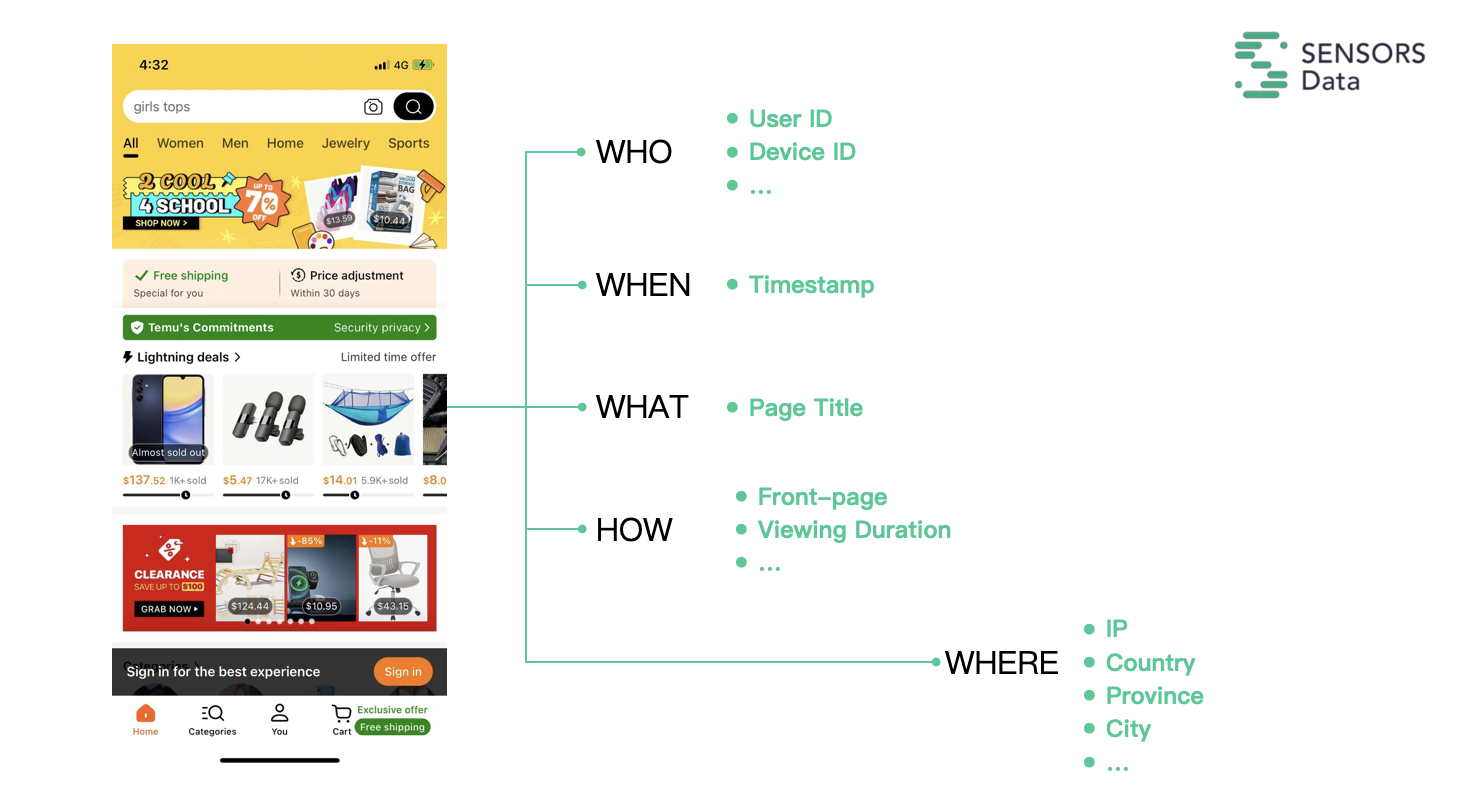
WHO: Identify the User
The 'WHO' dimension identifies which user is performing the event. When a user enters a feature page, it is crucial to recognize the user, even if they operate from different devices. A complete and appropriate ID-mapping solution significantly impacts the accuracy and completeness of user behavior analysis. This is especially true for metrics like user count, funnel analysis, retention, and user flow. Any disruptions in user identification can lead to inaccurate or unusable data. Before any data integration, it's essential to determine how to identify users. In the internet era, users are often identified via device IDs. Specific business scenarios might use user_id or login_id to ensure consistency across multiple devices.
WHEN: Record the Event Time
The 'WHEN' dimension captures when the event occurred. This is typically recorded automatically through a timestamp attribute.
WHAT: Define the Event
The 'WHAT' dimension describes the specific event. In this context, it follows a unique design model. For example, instead of defining the event as "home page view," it is labeled as "app page view," with a property added to specify which page is being viewed. This design approach helps manage numerous pages without cluttering the backend with hundreds of distinct events.
HOW: The Manner of Event Execution
The 'HOW' dimension relates to the attributes strongly associated with the event. It is crucial to maintain proper definitions, such as consistent page titles, to avoid issues like unidentified buttons or pages.
WHERE: The Context of the Event
The 'WHERE' dimension involves user attributes like IP, country, province, city, etc., which are processed and derived from basic information collection. Front-end dimensions such as port, app version, operating system, device manufacturer, screen dimensions, etc., are also typically collected.
Example 2: Describe the Customer Payment Order
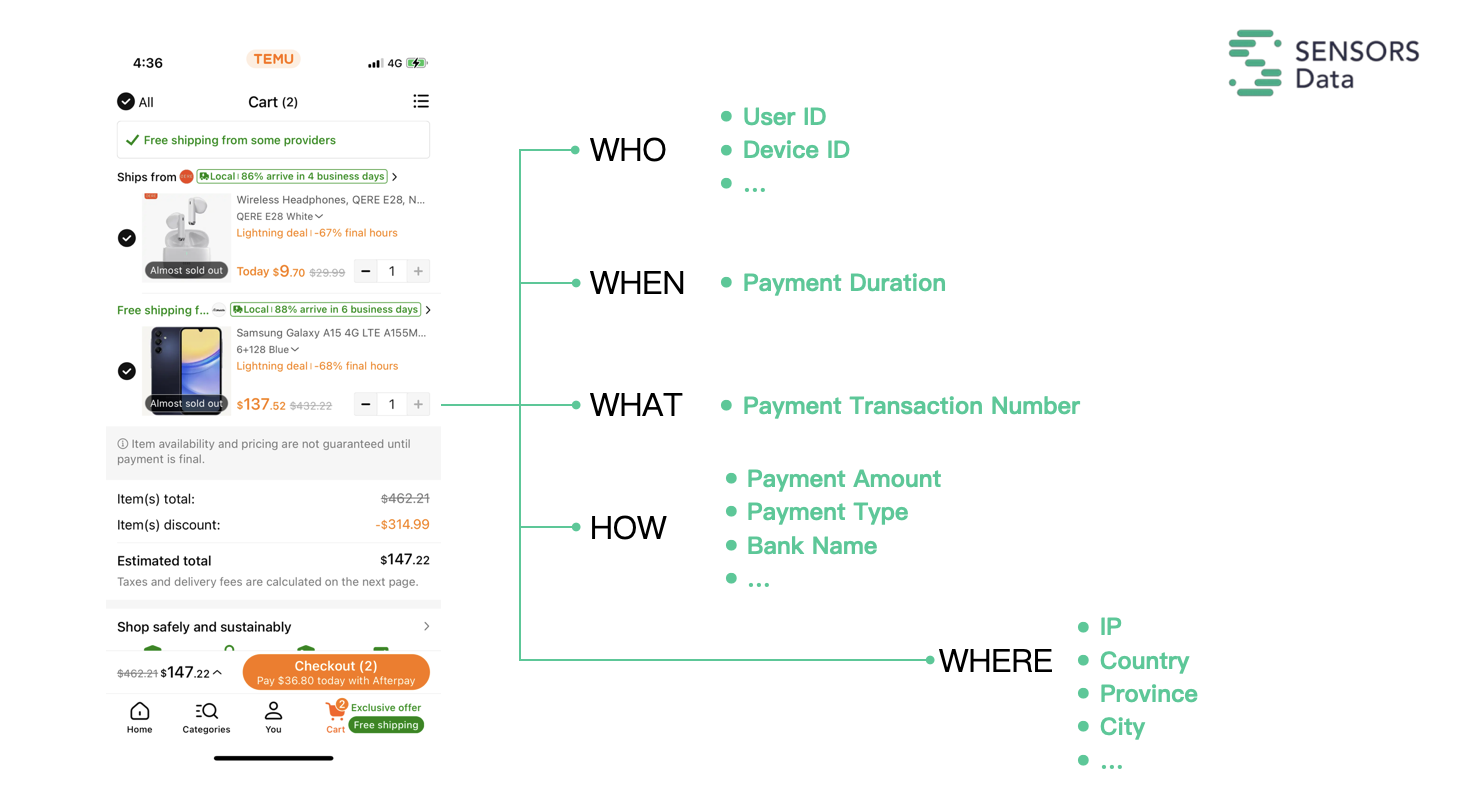
In this example, the focus is on business-specific data tracking requirements. An order's unique identifier, akin to a 'page name' in the previous example, is essential for backend data matching. Key attributes related to the payment event include payment amount, method (credit card, debit card, etc.), associated bank, and payment success status.
Common Challenges in Data Tracking
Challenge 1: Inaccurate Data
Problem: "This data is significantly different from the backend; the data is inaccurate."
Causes:
- Statistical Scope Definition Differences: The data being compared may have similar names and meanings but differ in scope and structure. For example, one dataset includes fingerprint login, while another does not.
- Inconsistent Event Definitions: The events being compared may differ in how and when they are triggered. For instance, one event is triggered by clicking the submit order button, while another is triggered by receiving a successful order submission result.
- Collection Method Errors: Front-end data collection may result in data loss, leading to discrepancies with back-end results. A difference within 5% is generally acceptable.
Challenge 2: Missing Data
Problem: "When I need the data, I find that the data I want is not available."
Causes:
- Lack of Data Collection Requirements: When new features are launched or changed, data collection requirements may not be adequately specified. By the time the feature is in use, the necessary data may be missing.
- Incorrect or Incomplete Event Tracking: If requirements are vaguely defined and not properly followed up for confirmation and acceptance, the collected data may be incomplete or incorrect.
Challenge 3: Excessive Events
Problem: "There are too many events, it's confusing, and using them is cumbersome."
Causes:
- Event Design Approach: Events are designed point-by-point without structured management and abstraction, leading to an overwhelming number of events. A more systematic approach to event design is needed.
- Maintenance and Iteration Rules: Frequent product updates can make it challenging to maintain systematic event tracking, leading to an accumulation of events that are difficult to manage and use.
Challenge 4: Unclear Data and Metrics
Problem: "I want to analyze an issue, but I don't know which data or indicators to look at."
Causes:
- Unclear Data Definitions: Event names, attributes, and values may not be properly mapped, making it difficult for business personnel to understand and use the data.
- Lack of Analytical Thinking: Without a clear understanding of the relationship between business analysis needs and data, it can be challenging to determine which data to analyze to solve business problems.
By addressing these common challenges and implementing solutions, businesses can improve the accuracy and usability of their data tracking systems. This, in turn, ensures that the data collected is reliable and valuable for analysis and decision-making.
Principles and Methods of Data Tracking Design
Top-Level Rules for Data Tracking
The top-level rules for event design include user identification mechanisms, event abstraction, consistent collection, and channel configuration. These principles ensure the accuracy and usability of the data environment.
User Identification Mechanism
A clear user identification mechanism prevents data inaccuracies and ensures seamless funnel analysis. This involves strict ID recognition and cross-platform user identification, enabling seamless tracking across different user states and devices. It is also the foundation of ID mapping and unification on CDP.
Event Abstraction and Property Reuse
Event abstraction consolidates similar triggers and scenarios into aggregated events. For instance, different user actions like 'requesting a verification code' in various scenarios can be abstracted into a single event, distinguished by additional attributes indicating the context.
Consistent Collection
Consistent naming conventions for pages and buttons across platforms help business personnel accurately retrieve data for analysis.
Channel Configuration
Channel configuration methods monitor and track data across various channels, ensuring comprehensive data collection.
Designing Events and Attributes for Data Tracking
Data tracking design involves four stages: business decomposition, analysis indicators, event design, and attribute design. Business decomposition and analysis indicators inform the event and attribute design. These stages convert business analysis requirements into developer-readable instructions, specifying the data to be collected in different scenarios.
Example: The Data Tracking of Coupon Marketing
Business Decomposition: Break down the business process, operational paths, and different scenarios, such as coupon issuance, usage, and expiration.
Analysis Indicators: Identify key metrics like coupon issuance rate, usage rate, GMV (Gross Merchandise Value), discount rate, and ROI.
Event Design: Define events and their related attributes based on the analysis indicators. For example, user actions like entering the coupon page, clicking to receive a coupon, and using the coupon during a transaction need to be tracked.
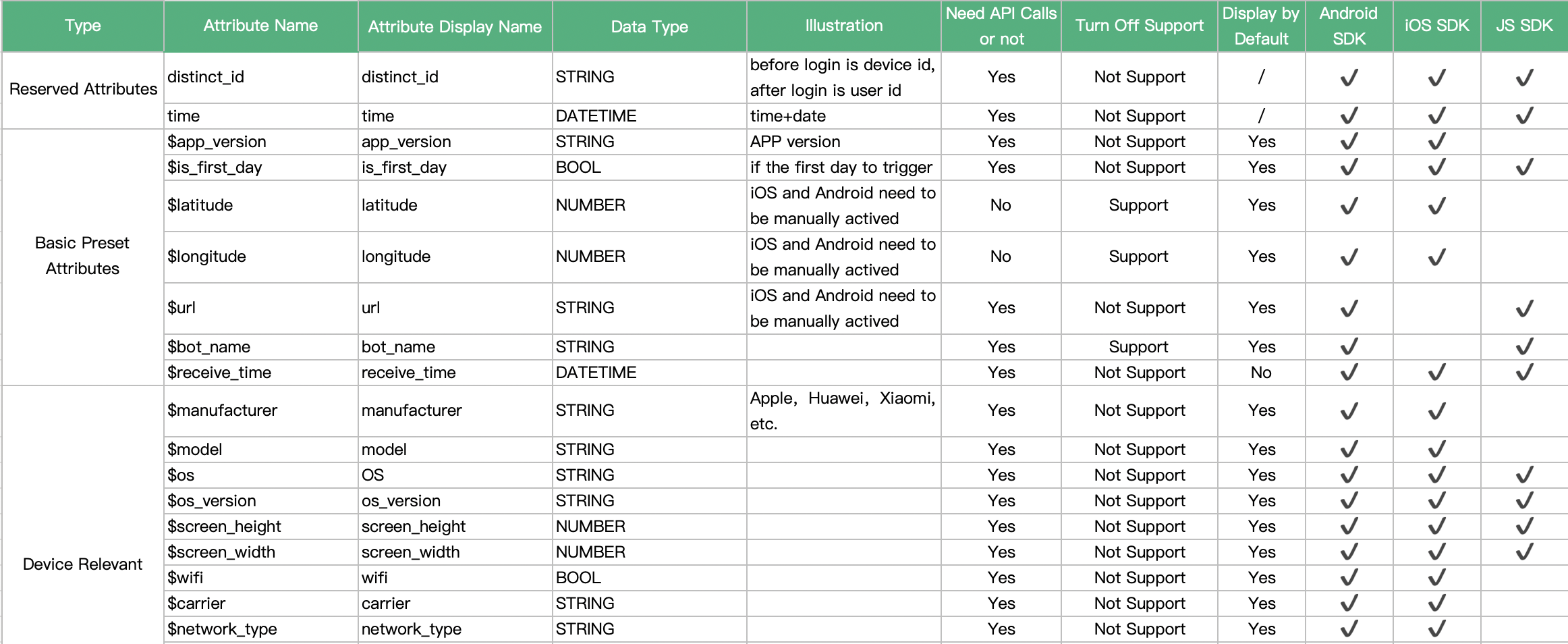
Attribute Design: Ensure comprehensive and independent collection of attributes such as coupon ID, type, value, applicable conditions, and validity period.
Data Tracking Methods and Trigger Timing
Common Data Tracking Methods
DataTracking methods include full-stack tracking, front-end code tracking, back-end code tracking, visualized full tracking and ETL import. Each method has its advantages and should be chosen based on specific needs and scenarios of your own organization. Therefore, a professional delivery team is necessary. It can help choose the most suitable tracking method based on the company's business characteristics and needs, formulate a more effective tracking plan, and lay a solid data foundation for long-term data applications in the future. Professional E2E service capabilities are also one of the advantages that distinguish SensorsData from other vendors like Google Analytics.
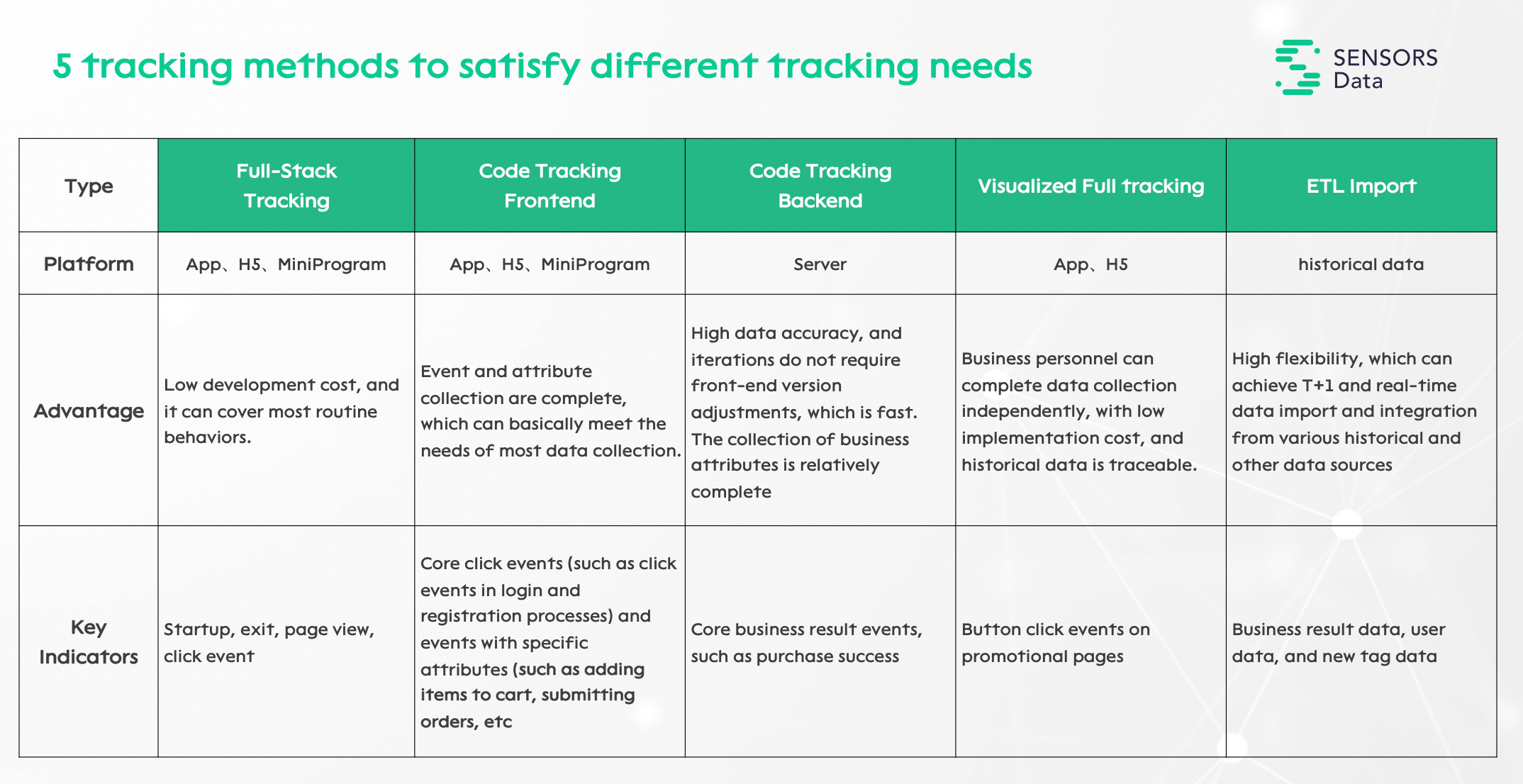
Trigger Logic for Event Tracking
Define clear event trigger logic, such as:
- Front-end triggers and reports immediately.
- Front-end reports after receiving backend results.
- Backend triggers and reports directly.
- Backend reports after receiving front-end attributes.
Different trigger logics have distinct advantages and should be selected based on factors like business meaning, ID recognition mechanism, front-end attribute acquisition, business processing result acquisition, and data accuracy requirements.
In summary, an effective and accurate data tracking design requires careful planning, clear identification mechanisms, consistent collection methods, and thorough attribute design. By following these principles, businesses can ensure reliable and comprehensive data collection to drive informed decision-making and strategic planning.
For more detailed information on creating a data tracking plan, you can refer to resources from SensorsData and other expert sources in the field.
Recommended for you
This site uses cookies to store information on your computer. Some are essential to make our site work; others help us improve the user experience. By using the site, you consent to the placement of these cookies.
